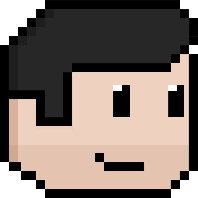The read-write web in 2021, or “A Young Man’s Illustrated Primer”
· 3 minute read

The web feels a bit more malleable than it did just a couple of years ago. Why might that be?
Knowledge management software has been with us for decades but only recently feels like it’s become a fixture of how early adopters use the web1. Networking one’s own personal notes might just be a step towards having the web be authored by a much larger subset of its users, doing so from rich text environments rather than IDEs. Great products like Roam Research2 have started to popularize the benefits of contributing nodes and edges to a knowledge graph, making their creation feel as frictionless as bolding or italicizing. How does networked note-taking lead to web authoring? I’m confident that we’ll see this new class of tools increasingly lead to our “notes” becoming both collaboratively authored and publicly readable, at which point the lines will have become quite blurry3.
In Neal Stephenson’s The Diamond Age, our young protagonist comes to possess a copy of The Young Lady’s Illustrated Primer, an interactive storybook designed to teach its owner everything they need to know through choose-your-own-adventure edutainment. The more I thought about Roam’s choice to include the word “research” in their product name, the more it helped me reframe my own relationship with the web. “Browsing”4 started to feel passive or reactive (if not a bit wasteful), while researching—reading but crucially also writing—felt proactive and enriching, a way to earn compound interest on your thoughts.
Researching made me feel like I was meaningfully investing in myself, not unlike how writing had in the past but now with tools tailor-made to empower. Networked note-taking became my Primer—tangents could be sought out instead of avoided, with backlinks turning the anecdotal into the indexed, the random into the patterned, the hazy into the coherent. Unsurprisingly, the web feels more pliable when you feel like a main character as opposed to an outside observer.
Next, the explosion of blockchains and distributed applications feels like a significant lowering of the barrier to contribution and participation. Yes, open source software predates smart contracts and traditional REST APIs can already be built on top of. But the composability and interoperability inherent in these new ecosystems brings increased opportunity to leverage existing code and data, both to adapt in new ways or to wrap in higher levels of abstraction.
My simplistic mental model:
— Bryan Irace (@irace) October 24, 2021
• Web 2.0: Each service has their own authentication/database, owns a subset of each user’s data.
• web3: User data lives in a public ledger, is brought from service to service by the user who owns their own public keys. Auth by connecting wallet.
Building on top of existing code, data, and authentication affords the benefit of focusing on novel logic and UX alone, and unsurprisingly has led to an incomprehensible number of new projects. The overwhelming majority won’t succeed, but we can repurpose a Ben Thompson quote about Shopify to understand why this can be reason for optimism:
I would argue that for Shopify a high churn rate is just as much a positive signal as it is a negative one: the easier it is to start an e-commerce business on the platform, the more failures there will be. And, at the same time, the greater likelihood there will be of capturing and supporting successes.
When I think of the web, I think of a series of siloed databases and applications: built by engineers, stitched together by crawlers, and served to the masses via search. Too often, this doesn’t feel particularly approachable even to me, someone with a career of experience building exactly these kinds of systems. It’s not purely about having the requisite knowledge5—the activation energy currently required to create something out of nothing undeniably keeps far too many good ideas from ever evolving past that.
But I’m optimistic that this can change in a big way. Are networked notes and blockchains really going be meaningful change agents? Perhaps not. But on this last day of 2021, they’re what come to mind.
